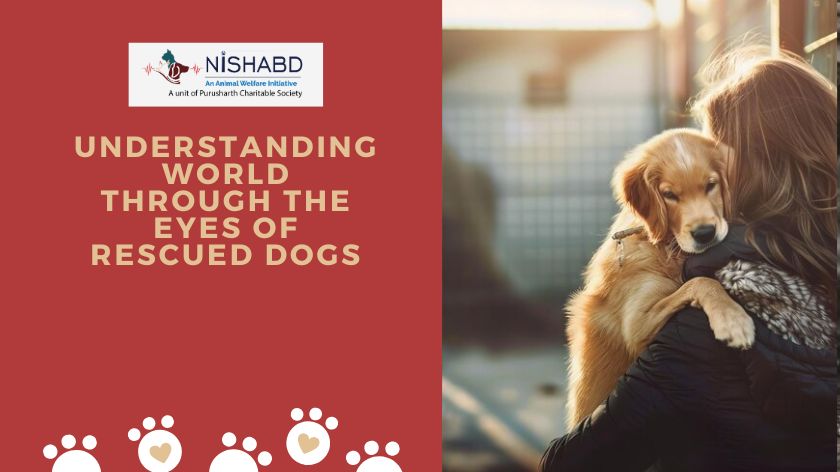Understanding the World Through the Eyes of Rescued Dogs
The world as seen from the perspective of rescue dogs can provide important insights into their lives and feelings. Dogs who are stray, particularly those who live in India are often in extreme conditions and their view about the world is shaped by their experience.
In this blog, we’ll examine how stray dogs view the world, with a focus on the psychology of dogs and the role played by eye-witnesses to perceive the world.
Dogs are not our whole life, but they make our lives whole.
– Roger Caras
- The Reality of Stray Dogs in India
Stray dogs in India have many difficulties. They are often struggling to find shelter, food, as well as medical treatment. Their lives are constantly dominated by fear and uncertainty. This reality has a profound impact on how they view the world surrounding them. Stray dogs in India are constantly alert, making use of the senses of their owners to explore through their surroundings and ensure their safety.
- How Dog Eyes See the World
Dog eyes are quite distinct from human eyes. Dog eyes have their own way of observing and interpreting their surroundings. Their eyes are adapted to be able to discern low-light and motion better than humans. While dogs aren’t able to see the same shades as humans do, they are adept at detecting movement, which is vital to their existence.
- Colour Vision: Canines perceive less colors than humans. They mostly detect shades of yellow and blue however, they are unable to distinguish between greens and reds. This color-limited range is not a hindrance to their ability to recognize movements or detect potential dangers.
- Night vision: Dogs have better night vision than humans. There are more retina cells for rods which improve their ability to perceive low light. This ability assists them to stay awake at dawn, dusk or at night.
- The Role of Dog Psychology
Dog psychology plays a key part in understanding how stray dogs see the world. Their experiences, specifically those of abandoned or neglected dogs, affect their behaviour and how they interact.
- Fear and Anxiety: Many stray dogs in India are afflicted with anxiety and fear because of their hazy and uncertain lives. They are often cautious of humans and other animals, and may react defensively when they feel threatened.
- Trust and Bonding: Dogs who have been rescued often need time to develop trust with strangers. Their experiences in the past influence the way they form bonds. Understanding the psychology of dogs helps us to be more understanding and compassionate when they adjust to their new life.
- The Impact of Environment on Dog Perception
Dogs that are stray in India reside in different surroundings, ranging from dense urban areas to natural landscapes. Their perspective on the world is affected by their surroundings, which affects their behaviour and reactions.
- Urban challenges: In cities the stray dogs have to contend with the bustling streets, loud sounds and lots of people. Their senses are always alert to dangers that could be lurking, and their behaviour is often dependent on the chaos of the urban setting.
- Rural Experiences: In rural regions wandering dogs may encounter various challenges, including encounters with wildlife or a lack of a consistent source of food. Their perspective on the world has to be able to adapt to the changing conditions.
- Understanding and Helping Rescued Dogs
In order to help dogs who have been rescued adjust and flourish by understanding their perspectives, it is vital. Here are a few ways to help them, based on their individual needs and experiences:
- Create a Safe Space: Creating a cozy and secure space helps rescue pets feel safe. A calm, comfortable place allows them to relax and build trust over time.
- Be Patient and Gentle: Rescue dogs might require time to adjust to the new environments and to new people. By interacting with them in a gentle and reassuring manner, you can make them feel more at ease and safe.
- Positive Reinforcement: Utilizing positive reinforcement methods like treats and praise, can help encourage desired behavior and increase confidence in dogs who have been rescued.
- Observing and Learning from Dog Eyes
The way dogs look at their surroundings can offer valuable insight into their moods and needs. For instance:
- Eye contact: Canines typically make eye contact when communicating. Eye contact that is relaxed can signify confidence, whereas a stern gaze could signal an issue or discomfort.
- Face Expressions: The eyes of dogs are used to express a variety of emotions. Knowing these expressions will assist us in responding appropriately with their wants and emotions.
Conclusion
Being able to view what is happening around us through the eyes of dogs who have been rescued is recognizing the unique difficulties faced by dogs who wander in India and the way in which their experiences affect their perception. When we study dog psychology and the significance of the eyes of dogs and their role in our lives, we can gain insight into the way they behave and their emotions.
Offering a secure and supportive space, and being patient and being aware of their non-verbal signals are crucial steps to help the dogs that have been rescued to adjust and flourish. Through compassion and understanding, you can help make a huge impact on the life of worthy pets.

